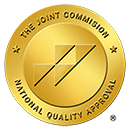Everything You Need to Know About CT Scans
Being told you need a CT scan, or indeed any kind of medical intervention, can be worrying. You don’t know what to expect, how long it will take or whether to anticipate pain or discomfort. In cases like this, ignorance is not bliss so here are the most important facts you need to know about CT scans.
What Is a CT Scan?
CT stands for computerized tomography. The doughnut-shaped machine that performs the scan takes and combines different x-ray images to build up a detailed cross-section of organs, bones, soft tissue or blood vessels inside the body. Taking 360° pictures, they provide specialists with a far more detailed view than ordinary x-rays. A CAT scan is the same thing.
Why Might You Need One
Because CT scans can be used to examine any area of the body, they are used in many diagnostic situations as well as to help specialists plan surgical procedures. They are also used to measure the effectiveness of treatments the patient has already received.
By being able to see right inside the body, scans are helpful in diagnosing bone or muscle disorders and can be used to accurately assess and locate fractures or bone tumors, blood clots or cancers.
They can also be used to guide procedures such as during biopsy or in cases of radiation therapy. In cases of sudden trauma, such as after a car accident, CT scans can help detect internal injuries or bleeding.
Are There Any Risks?
There are some tiny risks associated with CT scans, but the benefits are far greater. What risks there are come from the ionizing radiation which is greater than that received during a regular x-ray. CT scans have been in use for many years and there is no evidence to show they cause long-term damage. The machines in use today are far faster, and the techniques in use require less radiation. Doctors are careful to use no more radiation than is necessary in order to get the information they need.
Pregnant women should always inform their doctors before undergoing a CT scan. The procedure is unlikely to harm unborn babies but in certain circumstances, doctors may recommend alternative examinations. Alternatives include ultrasound or MRI scans.
Other possible risks include allergic reactions to the contrast material that is introduced to the body before the scan. If you have had an adverse reaction previously, you should inform your doctor. Any allergic reactions that do occur are normally mild, involving a rash and maybe itchiness.
Preparing for a CT Scan
The contrast material previously mentioned blocks x-rays and shows up as white areas on the images produced. The contrast material is introduced in various ways:
•Inserted via the rectum by enema, sometimes used in the examination of intestines. A somewhat bloated, uncomfortable feeling can result.
•In a drink. While this may taste unpleasant, it helps in the examination of your stomach or esophagus.
•By injection through a vein in your arm, used to help doctors visualize the liver, blood vessels, urinary tract or gallbladder. Some people report a metallic taste or a feeling of warmth.
In addition to the contrast material, you may also be asked to swap your clothing for a hospital gown and remove all jewelry, spectacles or dentures. All those items can show up on the images produced, distorting the results. You will also be asked not to eat or drink anything for a few hours before a CT scan.
In instances where a child needs a CT scan, a sedative may be used to keep him or her calm and help them stay still. Any movement during the scan will result in a blurred image.
What Happens During the Scan
You will lie on a narrow table that slides through the doughnut-shaped opening of the machine. Because you need to lie perfectly still, straps and pillows or a special cradle for your head may be used. The x-ray tube rotates, and you’ll probably hear some clicking or whirring noises. You can communicate with the specialists at all times, even though they will be in a separate room. During the scan, you may be asked to hold your breath so the movement of your ribs and diaphragm don’t blur the images.
After the scan, you will be advised to drink plenty of water to help your body get rid of the contrast material. In some cases you may be asked to wait for a short time before leaving the hospital, just to make sure you feel perfectly well.
The digital files produced by the CT scan are examined on a computer screen, the results interpreted and a report is sent to your doctor. CT scans are routinely performed at hospitals, outpatient clinics or emergency rooms, including SignatureCare Emergency Center.




